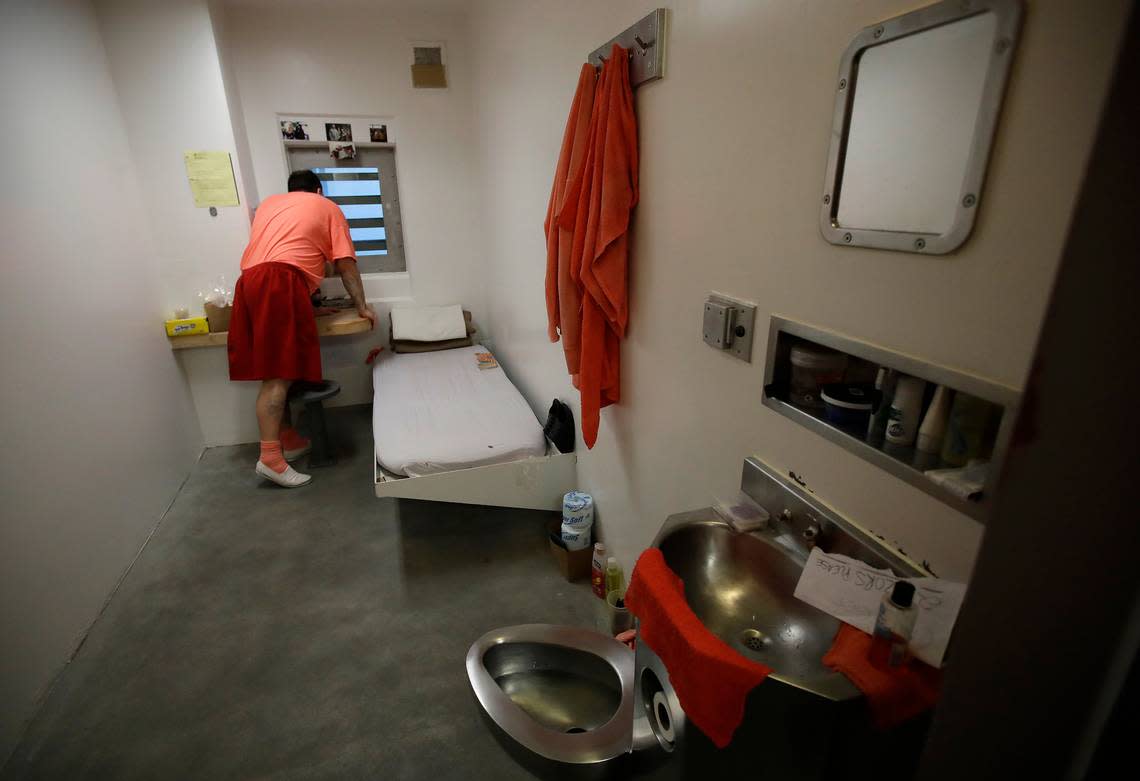Solitary confinement is costly, dangerous for inmates. Texas needs better rules over it | Opinion
At the start of the 2023 Texas legislative session, 300 incarcerated men went on a hunger strike to protest living conditions and their length of time spent in solitary confinement. Were their complaints well-founded, or should we brush them off?
People kept in solitary confinement, also known as restrictive quarters, remain in their cell 22 hours a day and receive two hours a day for recreation and a shower. They have little social contact other than with prison guards and the people bringing them food.
In Texas, about 3,100 inmates are kept in restrictive quarters. Although most spend less than a month at a time there, more than 500 have been in solitary for more than 10 years.
Some uses of restricted quarters make sense. A warden or a correctional officer will use solitary confinement to punish inmates who commit violent crime, to prevent a prisoner from being harmed, or for someone who is an escape risk. In unusual cases, the prisoner is recognized as a permanent threat and will probably never leave solitary confinement.

Gang tensions are one of the most common sources of prison violence, so wardens will sometimes isolate inmates who are confirmed members of the most dangerous and organized gangs. Though the inmates may not have violated any prison rule, their confinement is a means to prevent gang-induced violence.
Numerous studies have documented that the social deprivation of solitary confinement leads to depression, psychosis, cognitive decline, and increased risk of suicide. These adverse effects are more pronounced in people who already suffer from serious psychological disease such as schizophrenia and severe depression.
As one inmate put it, “I’ve seen good friends lose their minds back here.” Another referred to restricted quarters as a “psych patient making factory.”
The good news is that over the last 20 years, the Texas Department of Criminal Justice has decreased the number of inmates held in solitary from more than 9,000 to just over 3,000. That is commendable. The department achieved this reduction by offering step-down programs to assist people transitioning from restricted quarters to the prison general population.
Nonprofit organizations are helping. The Vera Institute has published research on alternatives to solitary confinement. Prison Fellowship’s Warden Exchange Program brings together hundreds of wardens from all over the United States for the purpose of developing and sharing best practices in corrections, including conditions for confinement.
But Texas’ law on restricted quarters guidelines needs to be updated. The state does not allow the placement of pregnant inmates in restricted quarters, but otherwise, there is no state law that outlines the conditions for solitary confinement or how people are evaluated once they are there.
With input from wardens, other prison officials, industry experts, and prisoners, Texas should adopt laws that guarantee an achievable and defined plan for cell-restricted inmates’ return to the general prison population. The Legislature should address the use of solitary confinement for gang members by commissioning a study of the effectiveness of experimental solutions such as gang disengagement programs.
Texas law should state that incarcerated people should not be released from solitary confinement directly into our cities without first participating in a pre-release program. Prisons should also make life-skill development such as conflict resolution and general education materials available to isolated prisoners. While these practices are part of the criminal justice departments policy, the Legislature should require them.
These policies have a high return on investment for the taxpayer. Those released directly from solitary confinement into our communities have a much higher chance of returning to crime. Furthermore, compared to the general prison population, providing solitary confinement for one inmate is remarkably expensive. Texas could apply for federal grants to cover some of the costs of transitioning to better programs.
Fyodor Dostoyevsky wrote that “the degree of civilization in a society can be judged by entering its prisons.” As a conservative, I put a high value on public safety, the inherent value of human beings (including those behind bars), and the smart use of taxpayer money.
That’s why it makes sense to find more ways to limit prisoner time in restricted quarters while making sure solitary confinement remains one of the tools available to our prison wardens.
Brian Byrd, a former City Council member, is a physician in Fort Worth.
